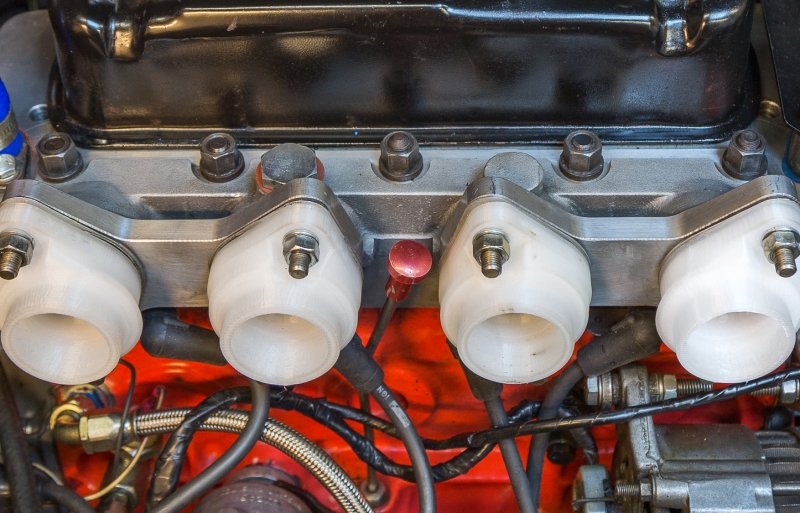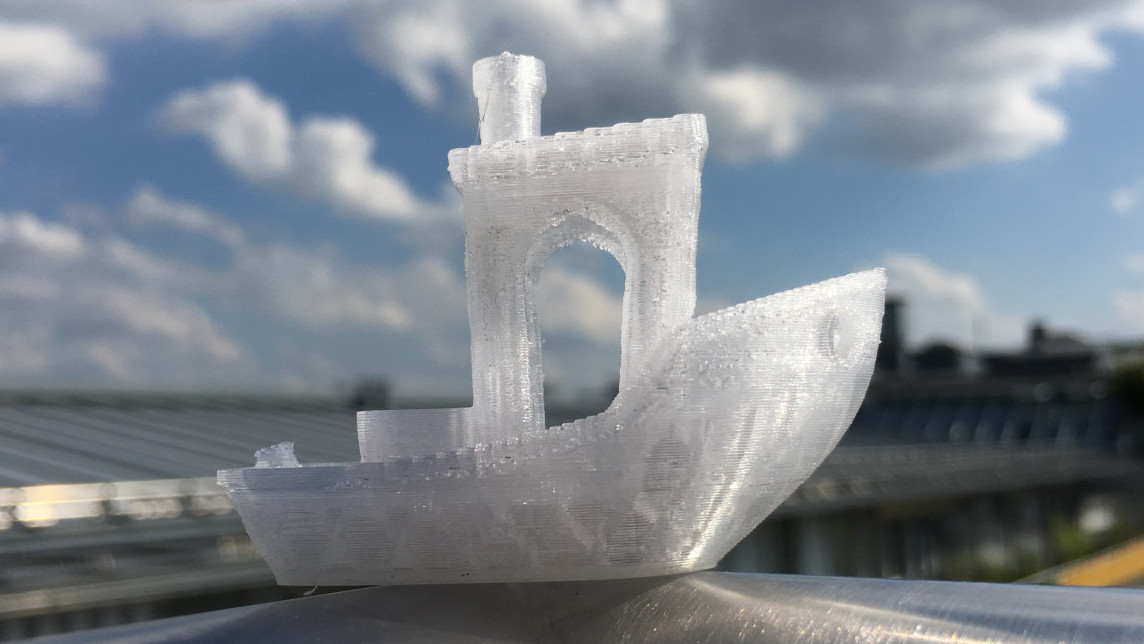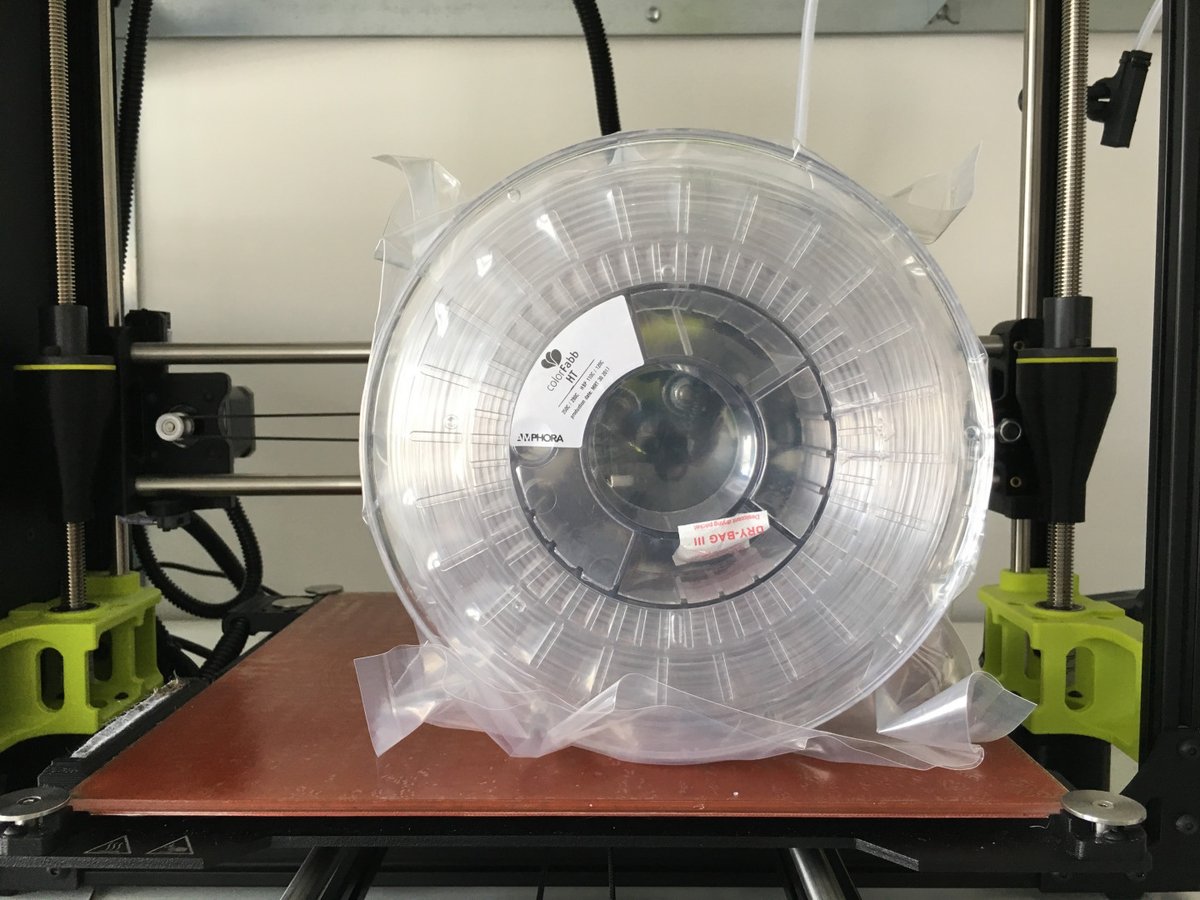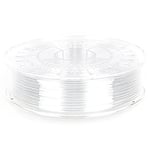Every Friday, we review a 3D printing filament or 3D printing resin. For this week’s filament, we took a new spool of ColorFabb HT filament for a test run.
What‘s Special?

Hailing from the Netherlands, ColorFabb started its business in 2012. They were the first to launch “PLA/PHA”, which has better mechanical properties than PLA. They haven’t stopped innovating since.
Besides offering a broad color palette of PLA, ColorFabb offers special materials (like copperfill, steelfill, or glowfill material), PET-G derivate in cooperation with Eastman, and even industrial FDM materials. Lately, ColorFabb offers materials in the RAL color palette range – so you can pick any color and have a spool made by them in 5 to 8 business days.
They also work closely with 3D printer manufacturers Aleph Objects (Lulzbot), Robo, Sintratek, and Stacker.
The material we’re reviewing here is a co-polymer called ColorFabb HT Clear. It is made from Eastman‘s Amphora HT5300, which has properties similar to PET-G. It is a low-odor and styrene-free material. The benefits, according to the manufacturer, lies in “excellent durability, toughness and high-temperature resistance with a Tg of over 100⁰C.”
Typical use cases are functional parts and prototype, and even automotive parts (pictured above). HT can resist chemicals, is styrene- & BPA-free, and even has an FDA food contact allowance.
A 1 kg spool of Colorfabb HT costs around $50.
The Verdict

We tested the Colorfabb HT on our test printer, a Lulzbot TAZ 6. The spool came in a cardboard box. It was sealed in a plastic bag to prevent the material from absorbing moisture. The pack also contained a small desiccant bag. The plastic wrap of the spool cannot be resealed, unfortunately.
To slice our test prints, we used Lulzbot Cura, as it offers a dedicated profile for ColorFabb HT already. The material is printed with a high temperature of 265 degrees Celsius, a bed temperature of 100 degrees Celsius and a travel speed of 60 mm/s. It gives the best results on a heated build platform, 100C to about 120C is usually needed for proper adhesion to a glass plate. If there’s not enough adhesion, the manufacturer recommends using a Buildtak bed for stronger adhesion.
None of our test prints failed. The surfaces turned out to be smooth and consistent.
The Benchy test print turned out to be very good, with just one minor layer problem (see below).

The overall layer adhesion was good, the prints tuned out relatively consistent, though Colorfabb HT seems to print a bit “wobbly”. Small details turned out nicely.

The next model was a carabiner. The print came out perfect. Stringing, which is a common problem for PET-G type materials, was reduced to an absolute minimum.

The last test print was the “Spring Clamp with Teeth“. This is not only an ingenious 3-part design, but also a great model to test the durability of a filament. If you print this model in regular PLA, the clamp will likely break, as the mechanical force applied to the spring and the joints tends to be very strong. So you need a stronger filament – that sounds like a job for Colorfabb HT.
During the print, we encountered some warping, as you can see below. This probably can be solved by adjusting the temperature of the print bed (more solutions here).

As the material is printed relatively hot, some material can heat up at the nozzle and turn into black goo, which potentially will end up in your print – that happened twice with our prints, as you can see below.

All3DP’s Verdict
We’ve been printing with a lot of great materials from ColorFabb, and the HT is no exception.
ColorFabb HT isn’t a material for your everyday prints – its a specialist that needs some tender loving care. Like the Ninjatek Armadillo, it is strong and rigid. But if you need a material that‘s impressively durable and resists heat up to 100 degrees Celsius, this is a great choice.
Specs and Settings

Colorfabb HT is a material you want to experiment with for the best print results. Here are the suggested settings for your 3D printer. You will need a heated bed, otherwise, the material won’t stick.
Printer Settings for Colorfabb HT
Filament diameter: 1.75 mm, 3 mm
Print temperature: 250 – 280 °C
Bed temperature: 100 – 120 °C
Suggested Printing speed: 40 – 90 mm/sec
Minimum nozzle diameter: 0,4 mm
How we Review
Friday is All3DP’s “Filament Friday”, where we take a spool of filament for a short test ride.
Every spool is brand new and unopened.
First, we 3D print a Benchy and check for any inconsistencies. Then we print one or two other 3D printables – and provide you with the results. Slicing is done in the latest version of Cura unless noted otherwise. The prints aren’t post-processed in any way; we just remove the support structures.
As for the printing settings, we take temperature and speed recommendations directly from the manufacturer. If the manufacturer offers a range, we go for the arithmetic middle. So if the manufacturer offers a range from 180-220 degree Celsius, we will set the printer for 200 degree Celsius (unless noted otherwise).
As a printer, we use a Prusa i3 Mk3 for 1,75 mm filament and a Lulzbot TAZ 6 for 2,85mm and 3mm filament diameter.
Of course, every spool is different. Even within a filament range, quality may vary. We‘re also aware that tweaking other settings like retraction can be the gap between a successful and a failed print. So if you own a spool of that filament, we would love to hear from you. Any interesting experiences? How did your prints turn out? Please feel free to add to the comments section.
License: The text of "ColorFabb HT (Clear) Filament Review – Strong & Heat Resistant" by All3DP is licensed under a Creative Commons Attribution 4.0 International License.
CERTAIN CONTENT THAT APPEARS ON THIS SITE COMES FROM AMAZON. THIS CONTENT IS PROVIDED ‘AS IS’ AND IS SUBJECT TO CHANGE OR REMOVAL AT ANY TIME.
